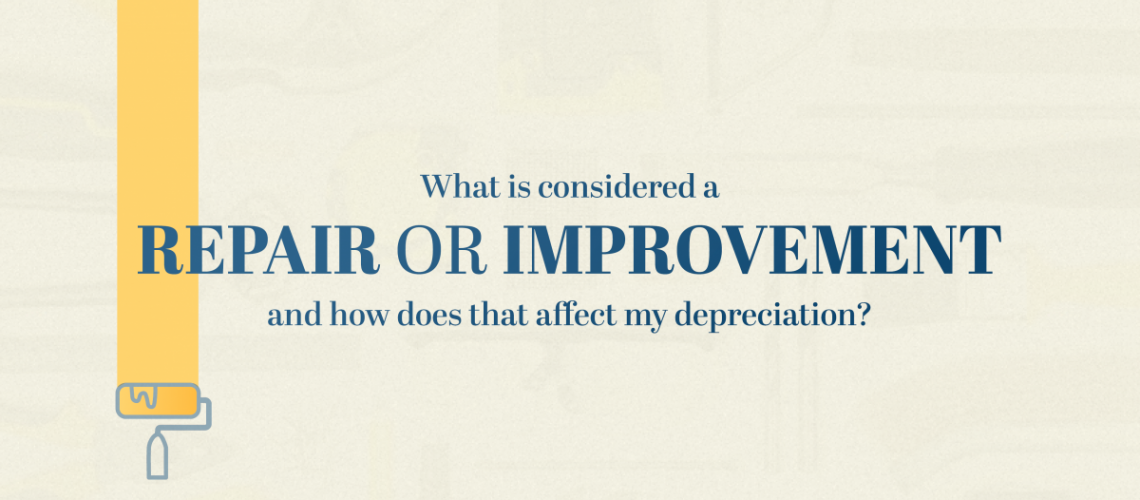Investors incur property related expenditures when undergoing renovations, replacements or repairs. These may be required when the building is rundown, in need of repairs or as part of the investors ‘value-adding’ strategy. More often, investors are asking how to differentiate whether it is considered a repair, a capital or a replacement as the tax treatment differs between them.
Here are things to consider when classifying repairs and improvements in your investment property:
Repairs
The word ‘Repair’ ordinarily means remedying a defect in, or damage to, or deterioration of a property restoring the efficiency of function of the property while not producing or adding a different function to property which it did not previously have (ATO TR 97/23).
In layman’s terms, this refers to restoring or replacing the asset or the property which has become defective, damaged or has deteriorated back to its original condition.
Investors undergoing repairs such as replacing a part of a broken oven or fixing electrical faults are entitled to an outright deduction meaning they may claim 100% of the expenditure in that financial year as a tax deduction. They must ensure that these repairs are for the purpose of producing assessable income by continuing the ordinary function of the asset.
One crucial question to ask is if you have improved or went beyond a ‘Repair’. In the sense that you’ve replaced the item or part with a superior product, it is considered a ‘Notional Repair’ which cannot be deductible as a repair, rather the cost will be claimed over the asset’s effective life defined by the Australian Taxation Office.
An example of this is if you replace your hot water system with an upgraded model which is more efficient or replace a thermostat which requires less maintenance within that hot water system. The costs incurred will then need to be claimed over the effective life of a hot water system which is 12 years.
Another point to consider is if you’ve made an ‘Initial Repair’ upon acquiring a property in need of capital to remedy defects, damage or deterioration (whether you knew at the time of purchase or not). The expenditure incurred will be added to the owner’s cost base, and if the owner makes a capital gain upon disposal, their tax liability is further decreased as they had to incur this cost to bring the building back to useful condition.
Improvement
An improvement is adding value to a property through expenditure on capital and several factors which indicate an improvement are:
- Extends the property’s income producing ability
- Significantly enhances salability or market value
- Extends the property’s expected life
This concept is related to notional repairs as performing either of these will cause the costs to be treated as a capital expenditure to be depreciated over the asset’s effective life.
If you’ve made repairs at the same time as the improvements, you may be able to claim the repairs as an outright deduction given the repair can be seperately identifed from the improvement and is not a notional repair. The repair will need to be isolated and identified and an example is that replacing door locks is a repair and changing the whole door is an improvement.
To conclude, investors are encouraged to keep track of their expenditure and consider if the repairs they have completed is to restore the original condition or improve upon the existing asset.
If you’ve got an extensively repaired or improved property and are unsure as to what can or cannot be claimed, we’re able to produce a report to distinguish repairs and maximise any outright deduction potential and scrap
For more complex scenarios, we always suggest liaising with our office and friendly staff on 1300 185 498 or request a private ruling from the Australian Taxation Office.

